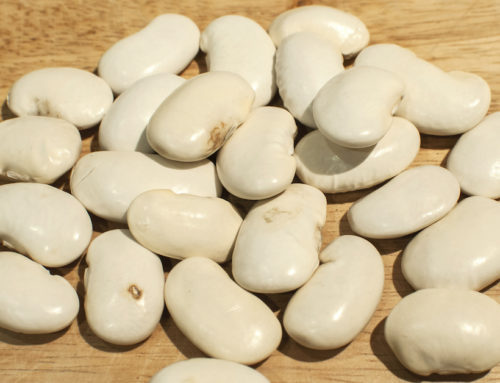A sharper brain is a less inflamed brain.
Inflammation is one of the brain’s worst enemies. As you age, your immune cells can get stuck in a continual state of attack mode – called chronic inflammation – even if there’s no pathogen or other health threat they need to attack.
When microglia, the roaming immune cells that are supposed to protect the brain, become chronically stuck in attack mode, they slow down the brain’s ability to function properly. Your memory and thinking can suffer.
But there’s good news…
A natural chemical that’s manufactured in your body can push back against this unwanted cognitive decline. What’s more, it’s easy to foster higher levels of this natural chemical with the right nutrition.
Getting more of this natural chemical in your body starts with eating more fiber.
The research shows that eating more fiber in your daily diet encourages the bacteria in your small intestine to churn out an increased amount of what are called short-chain-fatty-acids (SCFAs). Among these SCFAs is a particularly beneficial one known as butyrate. The pharmaceutical form is sodium butyrate.
The pharmaceutical form is currently being studied in the lab for its positive effects on blood sugar and weight loss. The early studies in mice suggest that sodium butyrate improves insulin resistance and may help prevent obesity.1
Meanwhile, lab tests at the University of Illinois show that butyrate made in the intestine slows the destructive inflammatory actions of microglia, turning down their production of inflammatory chemicals including interleukin-1β, which has been linked to Alzheimer’s disease.2
“What you eat matters,” says researcher Rodney Johnson. “We know that older adults consume 40 percent less dietary fiber than is recommended. Not getting enough fiber could have negative consequences for things you don’t even think about, such as connections to brain health and inflammation in general.”
How to Rev Up Your Gut’s Butyrate Factory
Along with eating more fiber, you can also get more brain-boosting butyrate flowing through your digestive tract by moving around more.
You can find the proof in a series of studies at the University of Illinois which demonstrate that exercising alters the population of the probiotic bacteria in your digestive tract and favors the little friendly bugs that produce butyrate. The researchers also say exercise can help in this effort even if your attempts at eating more fiber fall short of what you need.
“These are the first studies to show that exercise can have an effect on your gut independent of diet or other factors,” says researcher Jeffrey Woods.
In one of their investigations, the researchers took 32 people who rarely exercised, made up of 14 who were obese and 18 who were not overweight, and examined samples of their gut bacteria before putting them on an exercise program.
These people performed 30 to 60 minutes of cardiovascular exercise such as jogging, walking, swimming, etc., three times a week for six weeks. Each one of these folks watched their butyrate levels climb. And then, for another six weeks, they didn’t exercise at all. That’s when participants saw the butyrate levels in their bodies decline. Also, it’s important to note that everyone in the study was told to keep eating their usual diet.
The scientists found that people who were not overweight had greater gains in butyrate than those who were obese. But, still, everybody in the study enjoyed increases.3
Get Good Vibrations
If you want a fairly easy-to-do exercise you can perform without leaving your house but that’s enough to increase your butyrate, scientists at the Medical College of Georgia at the University of Augusta say you can try a whole-body vibrating platform.
In these lab tests, the scientists found that whole-body vibration can multiply the population of a friendly digestive tract strain of bacteria called Alistipes by seventeen times! Alistipes is an enthusiastic producer of SCFAs including butyrate.4You can order one of these whole-body vibrating platform machines online from many different companies.
And one more note about diet: If you’re looking to up the butyrate in your body with fiber, most high-fiber plants and vegetables will do, though some experts recommend legumes like beans and peanuts, as well as oats, rice and whole grains. Foods like sweet potatoes, asparagus, onions, bananas, Jerusalem artichoke and leeks are also good.
Dairy foods contain some butyrate as well, with butter having the highest levels.







